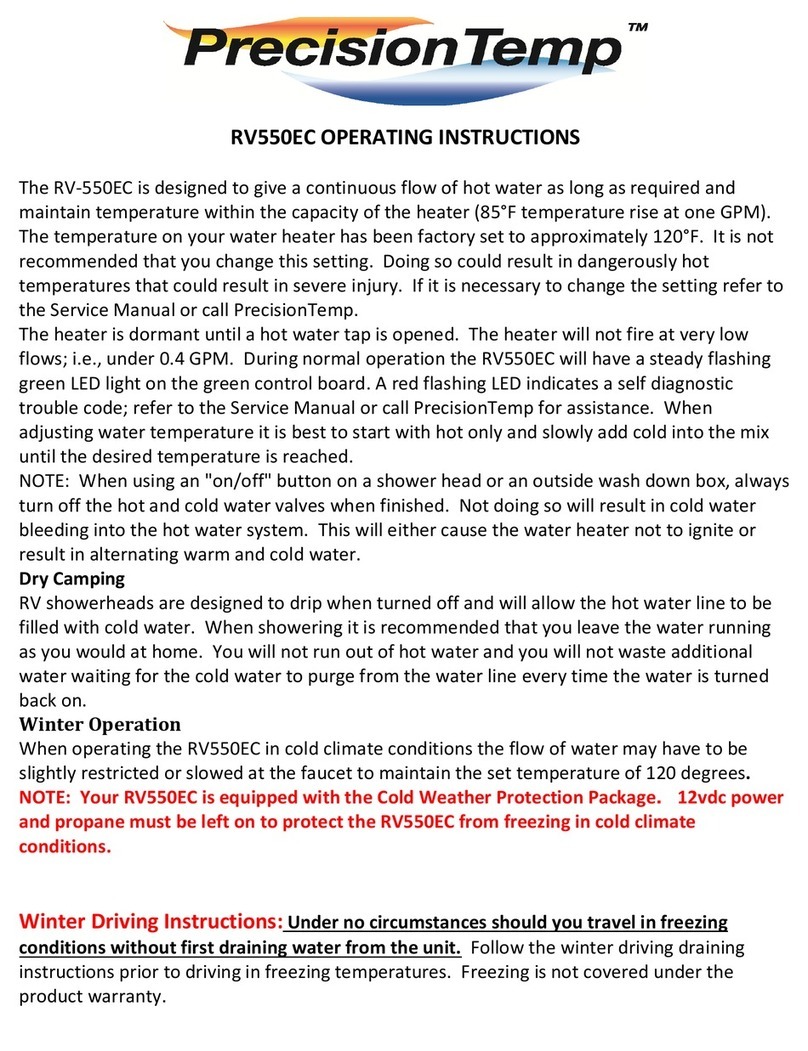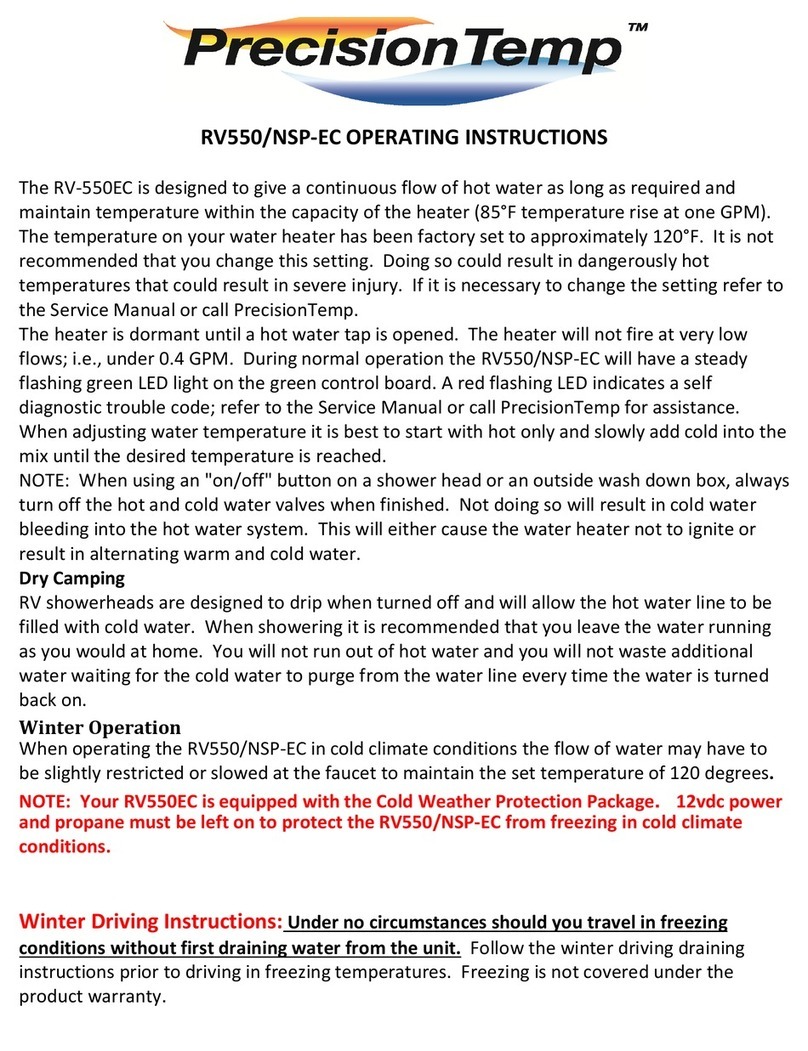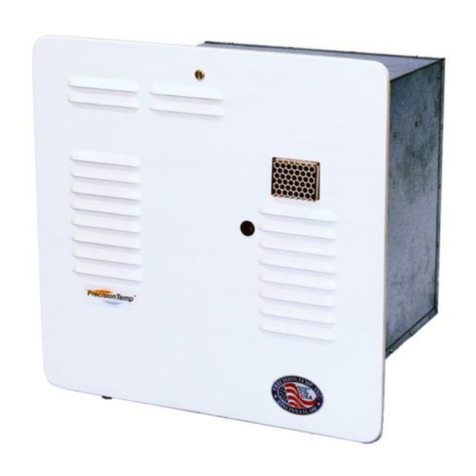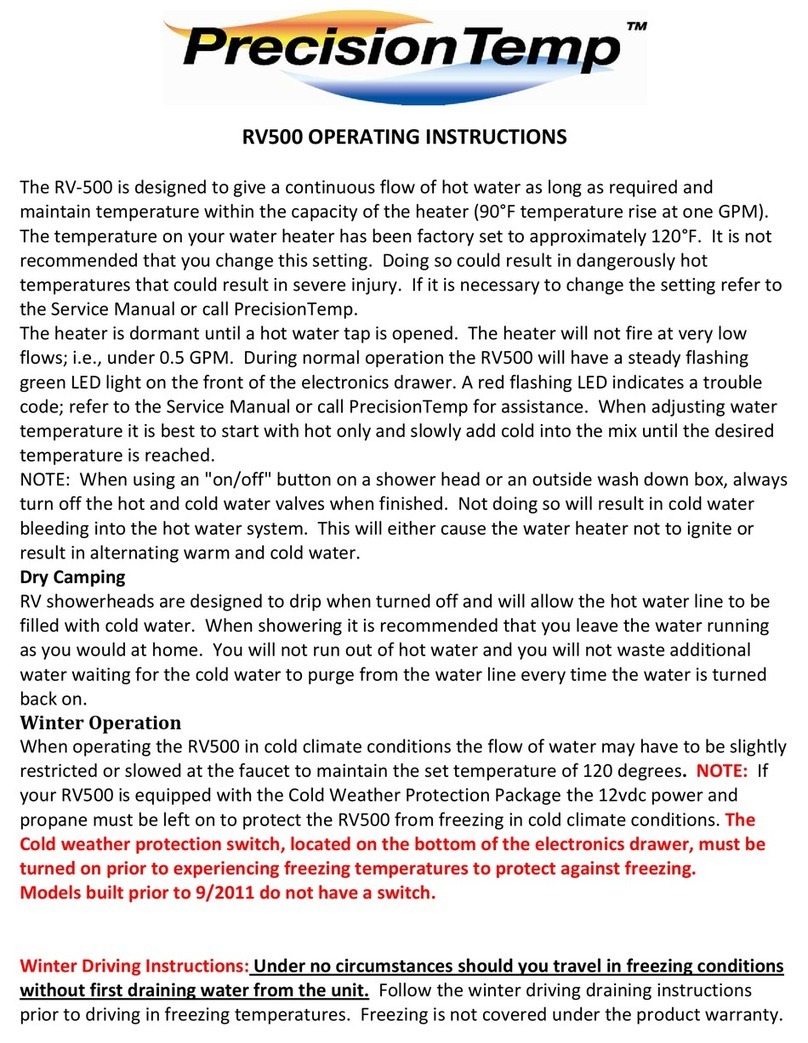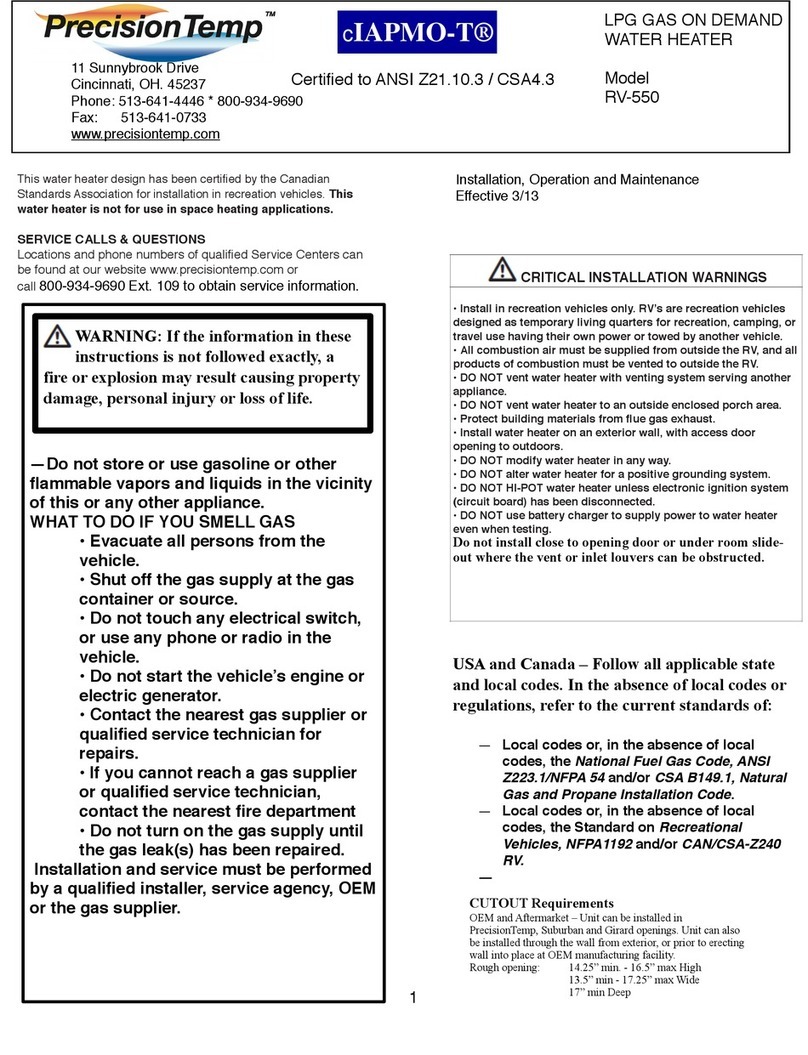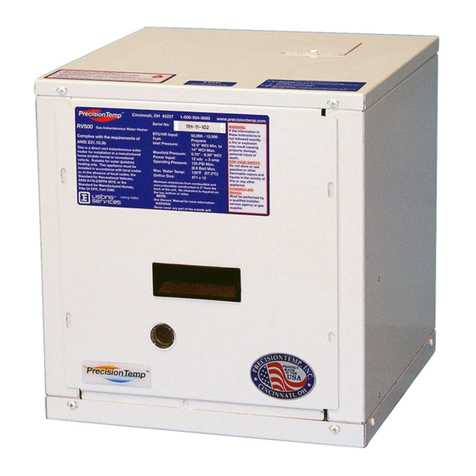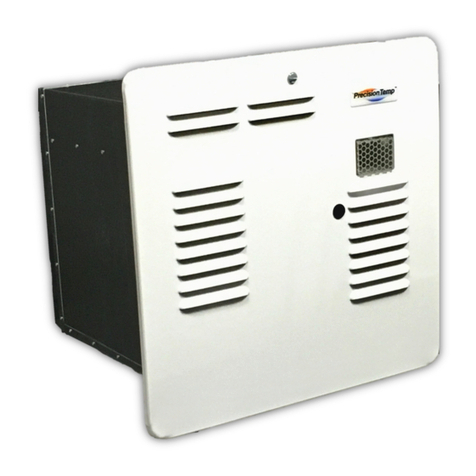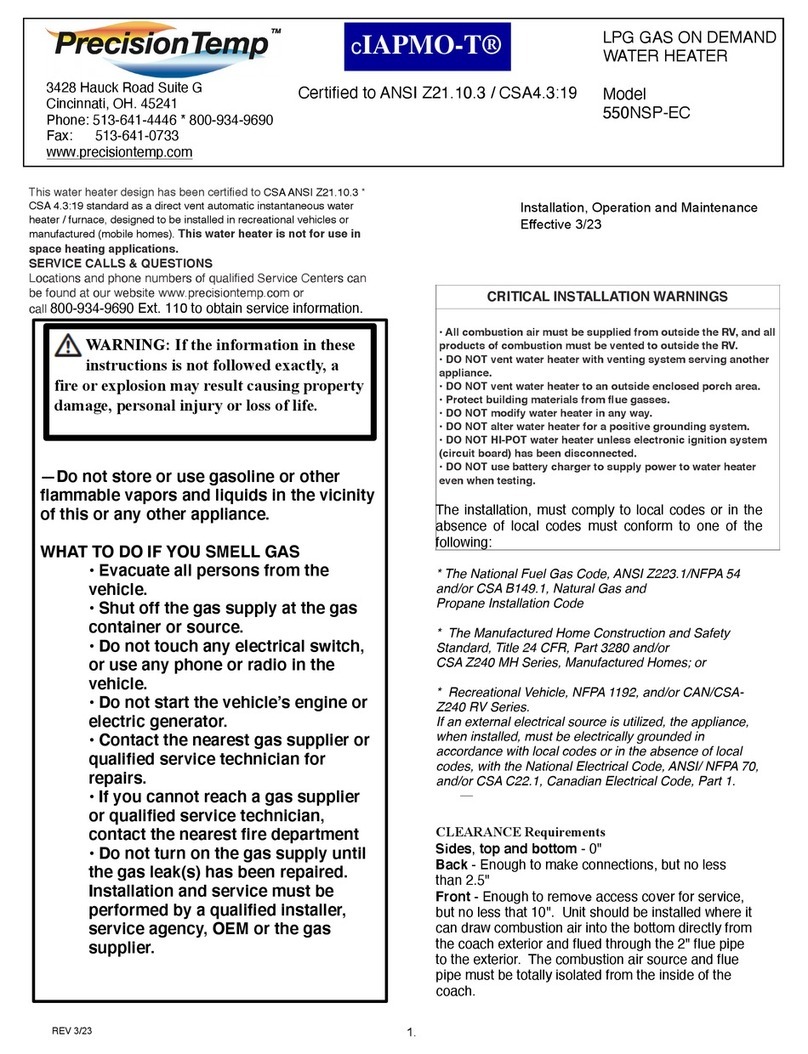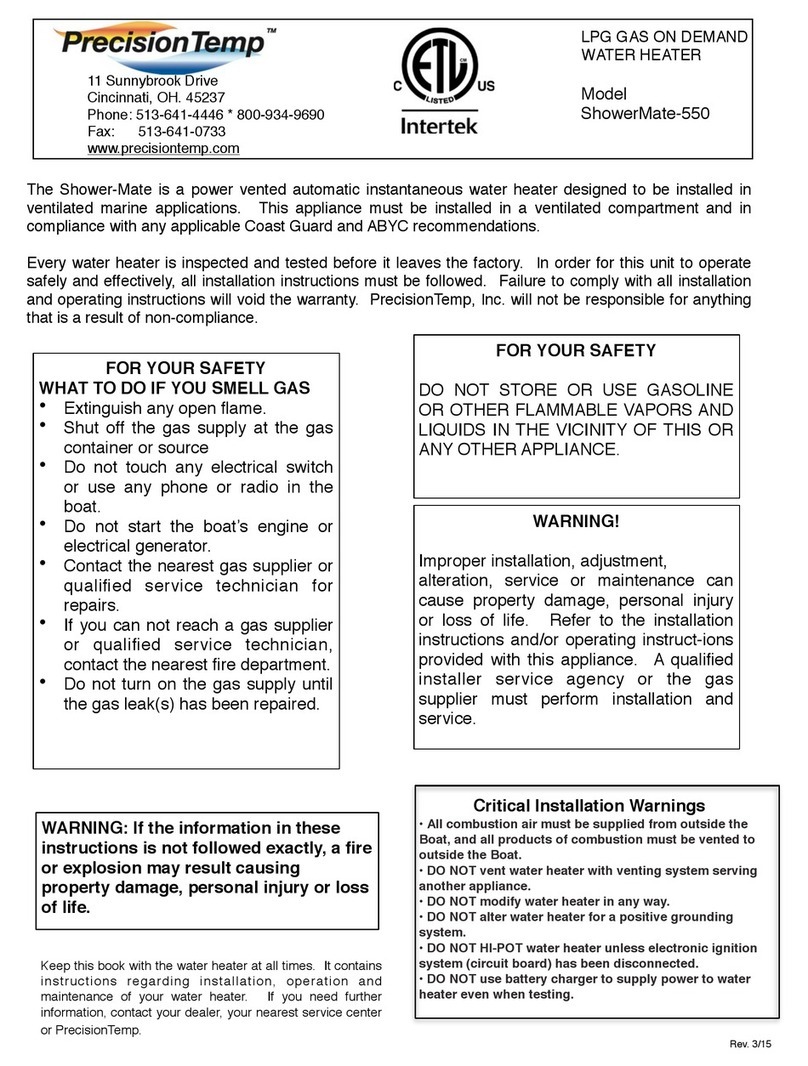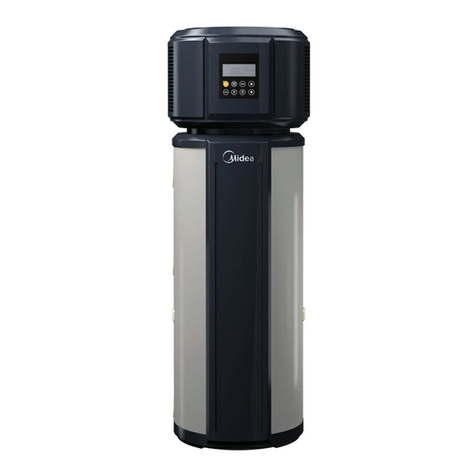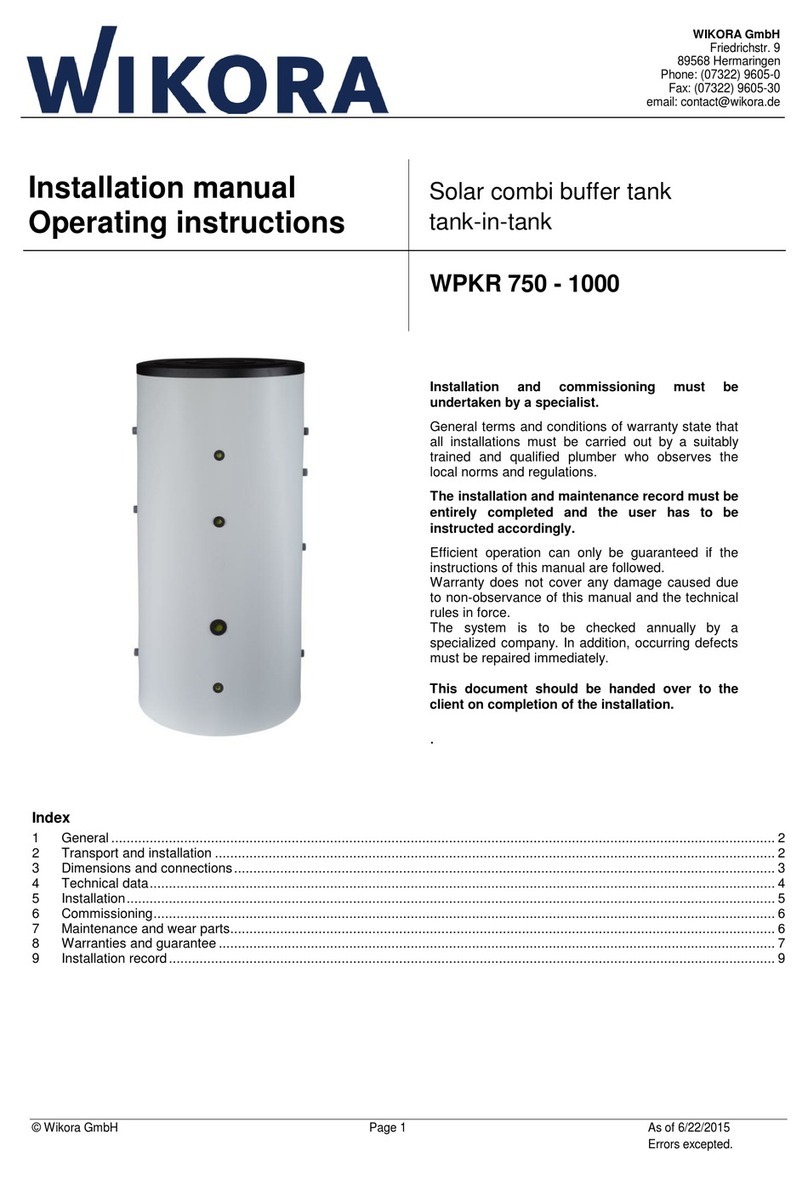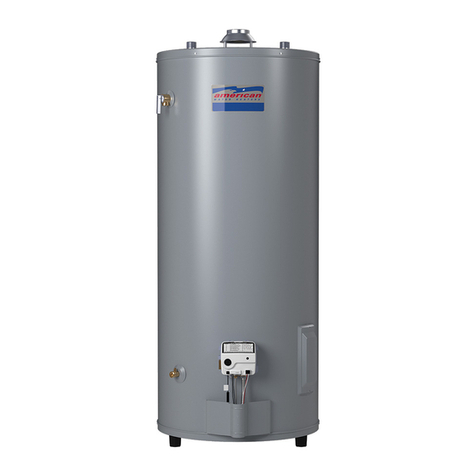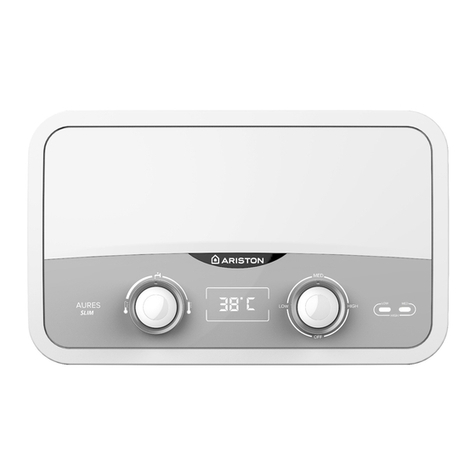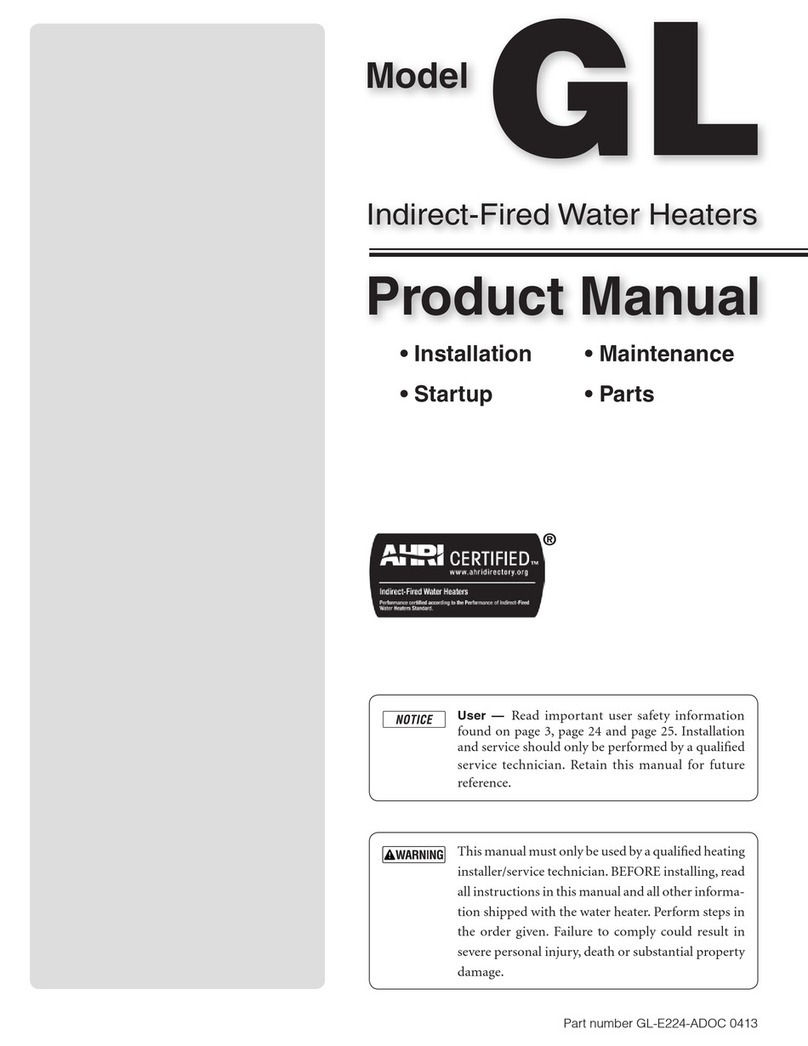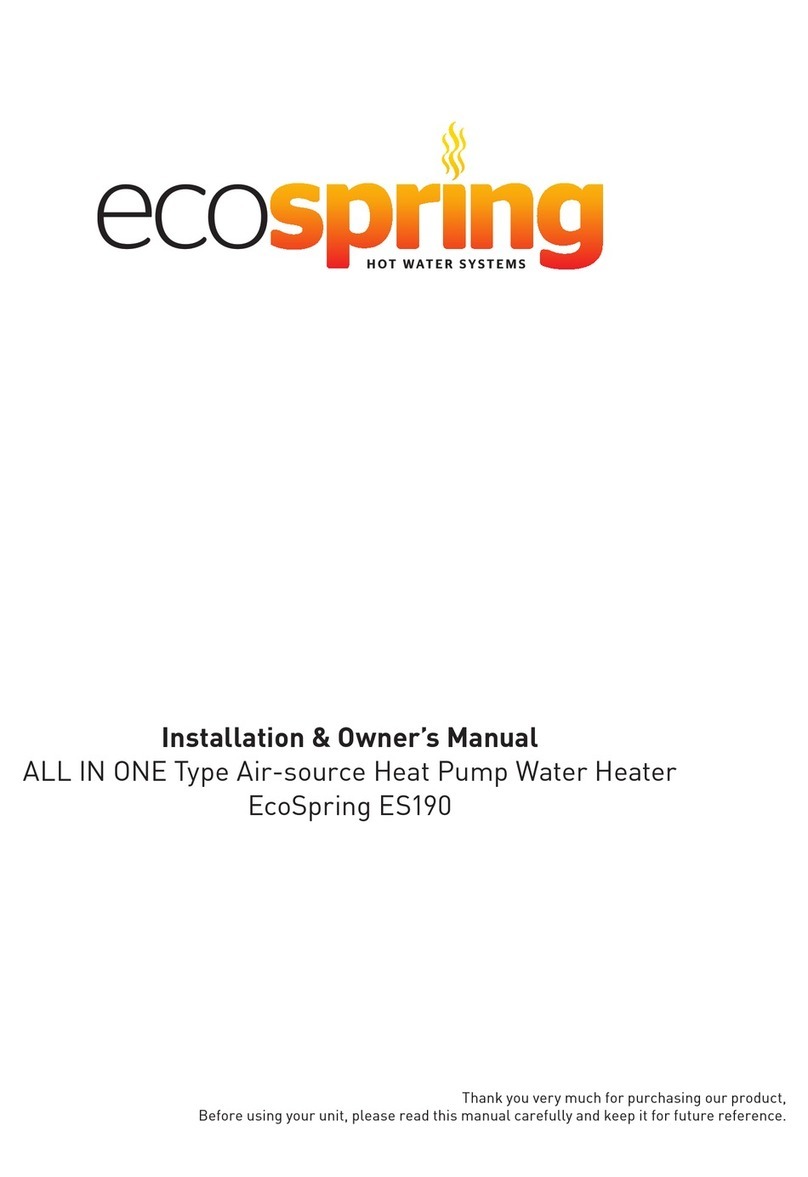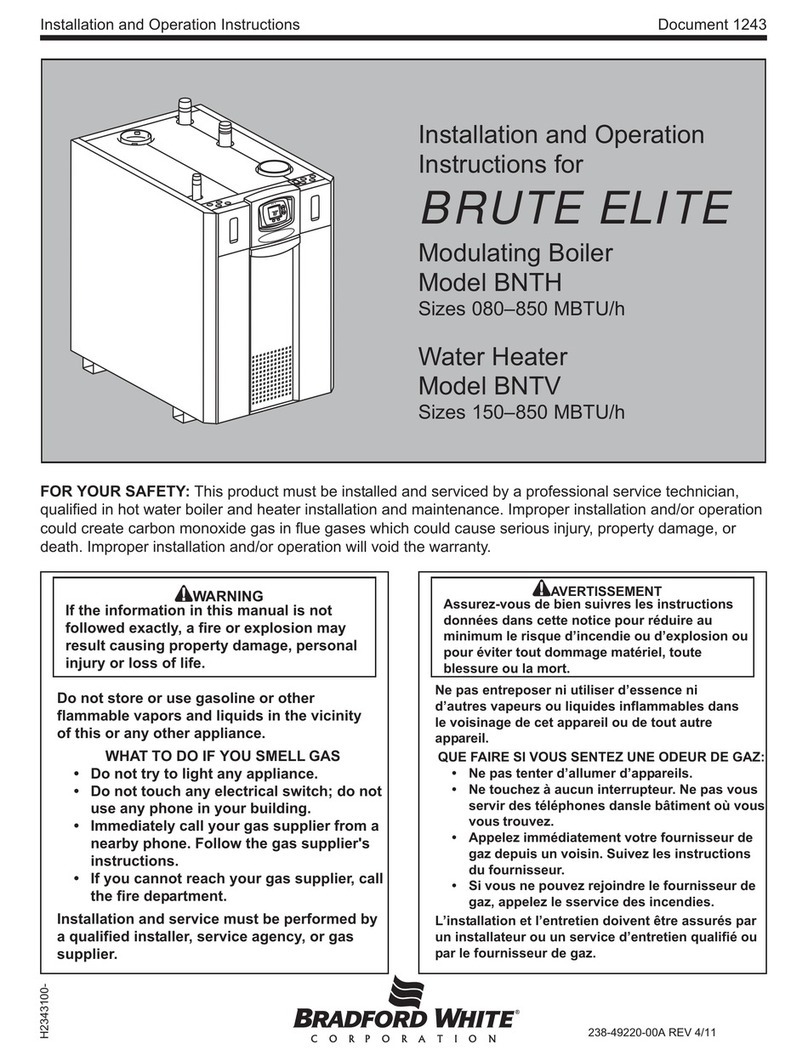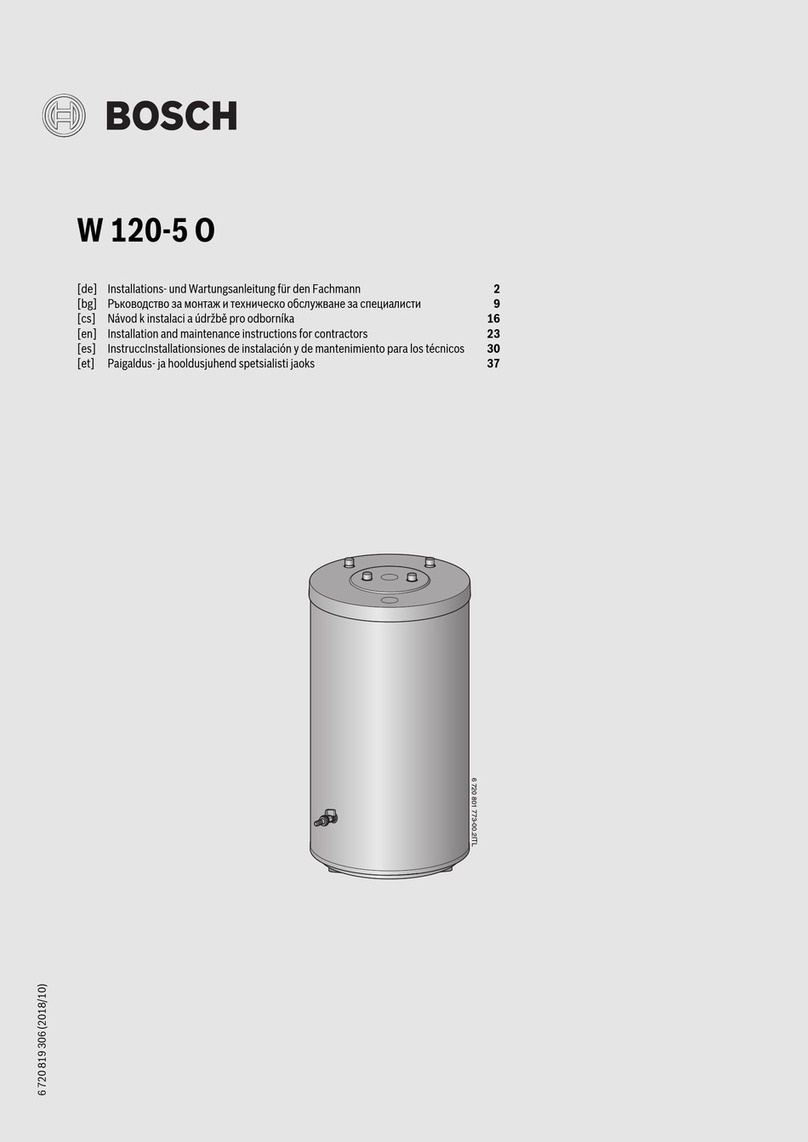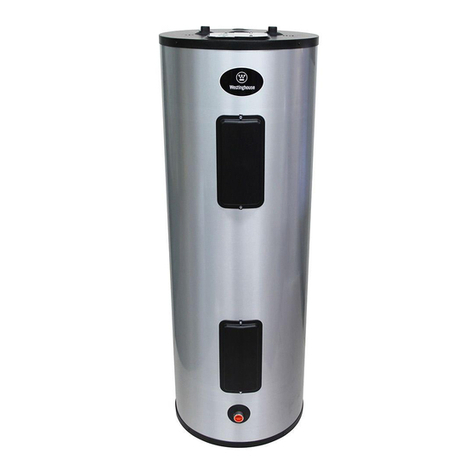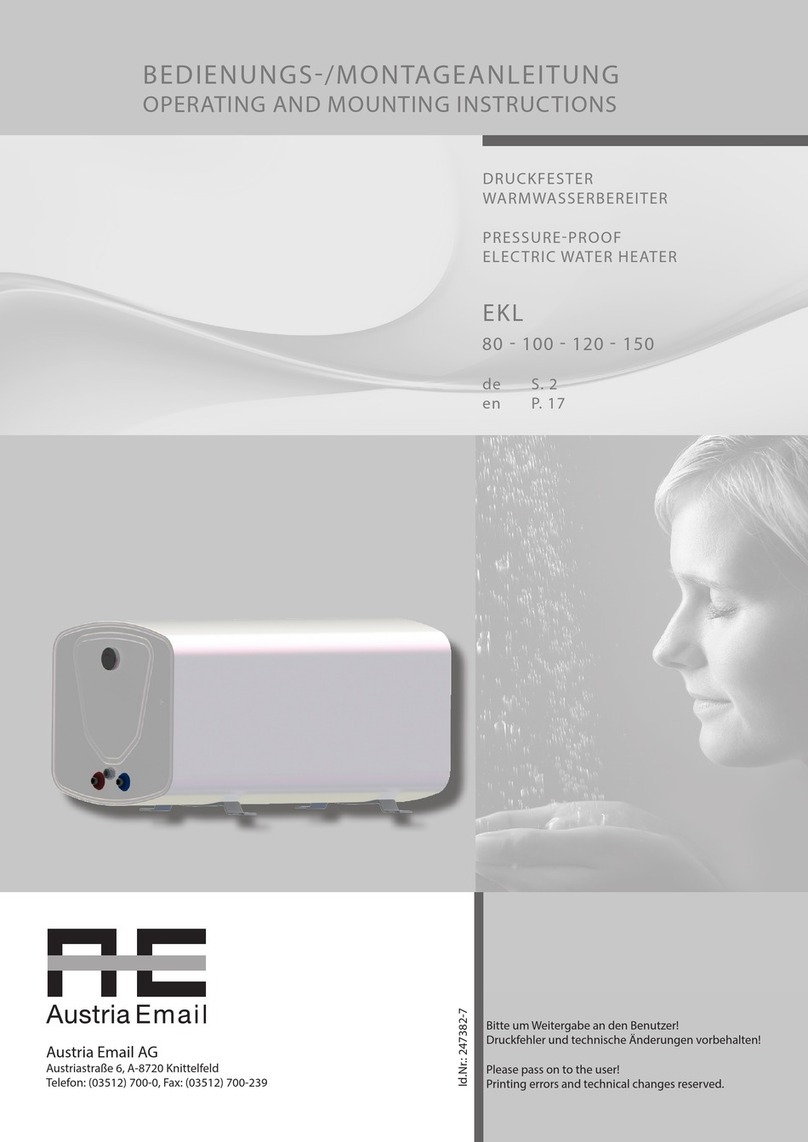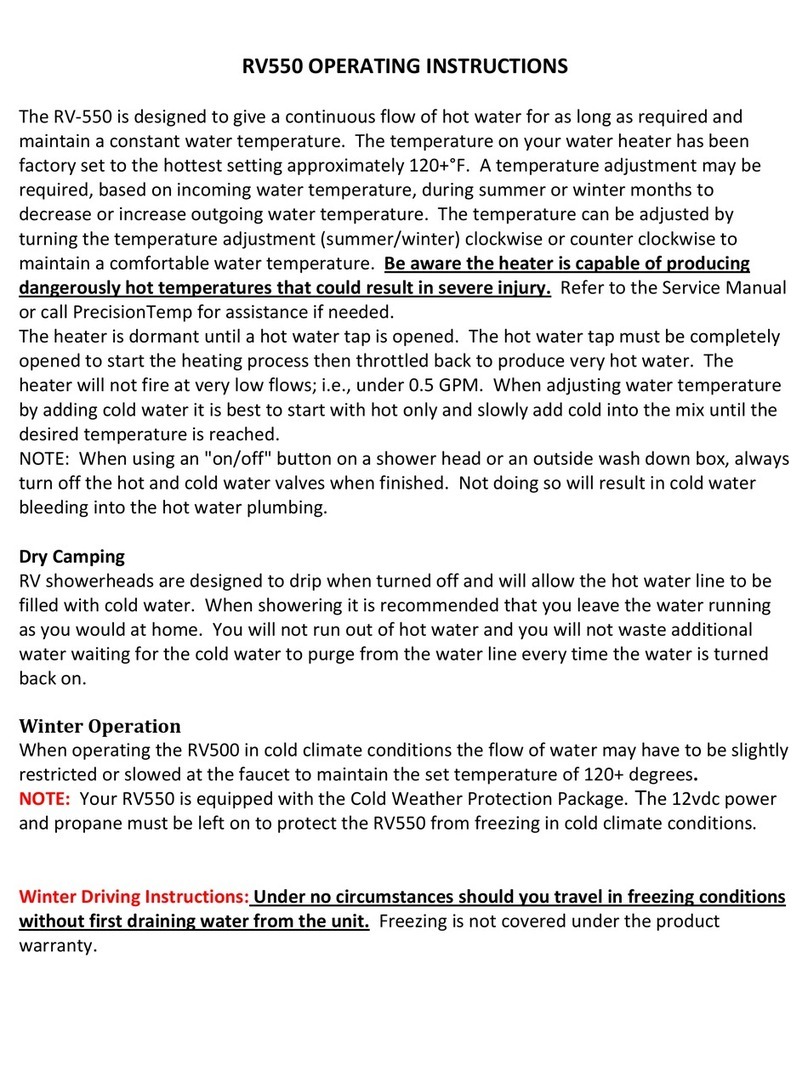
Once the tank reaches set temperature (5-15 minutes after system is turned on), continuous hot water is delivered
when any tap is opened. Delivery temperature is determined by the setting of tempering valve Warning: this
valve is factory set at about 120˚ F. adjusting temperature any higher could result in severe injury due to
scalding.
Tank thermostat turns pump 1 and burner on automatically when tank temperature starts to drop. Anti-freeze
circulates from burner and back to tank as it heats. Burner remains in high fire and gas modulates burner to low
burn until set temperature is attained. When set temperature is reached, burner and pump shut down and system
returns to stand-by mode.
Winter Mode Hot Water Production
During winter operation if the system has been dormant for more than 20 minutes turn on interior thermostat to
call for heat. When the heat register blowers come on turn off thermostat and turn on hot water tap. Preheating the
system is required in winter mode for hot water production due to 3 gallons of cold fluid in the hydronic loop
suddenly being returned to the TwinTemp tank lowering the fluid (boiler antifreeze) temperature required for hot
water production. Once fluid temperature reaches set temperature the system will make continuous hot water.
To Use With 110 Volt Heating Element
Turn on 110 volt element switch located inside coach.
Let the unit heat up for a minimum of 30-60 minutes.
Note: In the 110 volt mode of operation the electric element supplies the heat until demand exceeds its
capacity at which time gas burner automatically ignites.
The TwinTemp Jr. is equipped with one 110 VAC electric heating element. The element provides limited amounts
of hot water or space heating, such as washing hands or dishes. The electric element can be used with or without
the propane burner, but for continuous hot water or space heat, the propane burner must be used. To operate, turn
the 110 volt switch on in the coach.
For small amounts of hot water only, there is no need to turn the 12 volt power on to the
TwinTemp. However, if space heat is required in very cold weather, the 12 volt switch should be
turned on. If there is a higher demand for heat than the 110 volt element(s) can provide, the
propane burner will activate automatically. For best operation, turn the 110 volt element on
about 30 minutes before turning 12 volt switch on. This allows the tank to come up to
temperature utilizing the electric element before the burner can activate. This will help conserve
propane
Routine Maintenance
All faucet aerators and showerhead screens in the coach should be cleaned regularly. It is recommended that the
TwinTemp be inspected by a qualified service technician at least once a year. Particular attention should be paid to
the following:
•Be sure that the air inlet openings and flue area are clear of any debris or obstructions (leaves, bugs, nests,
spider webs etc.). Be sure nothing is stored against the unit that would block air or access.
•Inspect boiler anti-freeze level in reservoir tank. Top off if necessary with a 50/50 mix of specified boiler
anti-freeze and distilled water.
•Check that heater mounting is still secure to the coach. Tighten if necessary.
•Visually inspect wiring and hoses. Be sure there is no chafing of the insulation.
•Drain boiler antifreeze every 24-36 months for units with stainless steel tanks and install new boiler
antifreeze. (system holds approximately 4-6 gallons of a 50/50 boiler antifreeze/distilled water mix)
•Inspect for evidence of antifreeze leaks at internal and external plumbing connections and correct if
needed. Test radiator cap and inspect the overflow reservoir hose connections.
•Rotate mixing valve temperature adjustment knob several times clockwise and counter clockwise direction
to end stops twice each year.


















